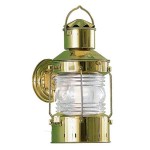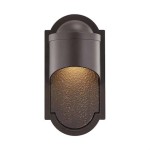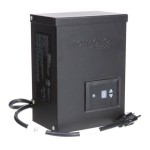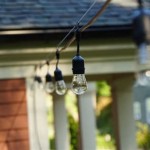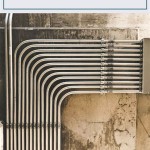How To Make A Wood Fired Outdoor Oven
Constructing a wood-fired outdoor oven is a significant undertaking that yields a rewarding culinary experience. These ovens, often referred to as pizza ovens, are capable of reaching extremely high temperatures, ideal for baking pizzas, breads, roasting meats, and preparing a wide array of dishes with a unique, smoky flavor. The construction process requires careful planning, meticulous execution, and an understanding of basic masonry principles.
This article details the steps involved in building a traditional wood-fired oven, focusing on a dome-shaped design, which is known for its efficient heat retention and even cooking. The process encompasses site preparation, foundation construction, hearth creation, dome building, insulation, and finishing.
Planning and Site Preparation
Before commencing any construction, meticulous planning is essential. The first step involves selecting a suitable location for the oven. Key considerations include proximity to the house, prevailing wind direction (to minimize smoke nuisance), accessibility for materials, and compliance with local building codes and regulations. It is imperative to check with local authorities regarding any permits or restrictions that may apply to outdoor oven construction.
Once the location is determined, the ground must be properly prepared. This involves clearing the area of any vegetation, debris, and loose soil. The area should be excavated to a depth of at least 6 inches to provide a stable base for the foundation. The dimensions of the excavated area should be slightly larger than the planned footprint of the oven to allow for proper foundation construction.
The foundation is a critical element of the oven's structural integrity. It provides a level and stable platform that prevents settling and cracking. The foundation can be constructed from concrete, reinforced with steel rebar. The depth and reinforcement of the foundation will depend on the size and design of the oven, as well as the soil conditions. A minimum foundation depth of 4 inches is generally recommended, but in areas with unstable soil, a deeper and more robust foundation may be necessary.
The concrete mix should be appropriate for structural applications, with a water-to-cement ratio that ensures adequate strength and durability. The concrete should be poured into the excavated area, leveled, and allowed to cure for at least 7 days before proceeding with the next stage of construction.
Alternatively, a foundation can be constructed using concrete blocks or bricks, laid on a bed of compacted gravel. This method is less labor-intensive than pouring a concrete slab, but it is crucial to ensure that the blocks or bricks are properly aligned and mortared together to create a stable and level surface.
Building the Hearth
The hearth is the cooking surface of the oven, and it plays a crucial role in heat retention and distribution. It is typically constructed from fire-resistant bricks or tiles, laid on a bed of sand or mortar. The hearth should be level and smooth to ensure even cooking.
A layer of insulation should be placed between the foundation and the hearth to prevent heat loss into the ground. This insulation can be made from materials such as perlite, vermiculite, or ceramic fiber blankets. The insulation layer should be at least 2 inches thick to provide adequate thermal protection.
A layer of sand or mortar is then spread over the insulation layer to provide a level bed for the fire bricks. The fire bricks should be laid tightly together, with minimal gaps between them. Fire-resistant mortar should be used to fill any remaining gaps and to secure the bricks in place. The hearth should be allowed to cure for at least 24 hours before proceeding with the construction of the dome.
The shape of the hearth is usually circular or rectangular, influencing the overall oven design. The size must be adequate to hold the desired dishes. The area to consider is the internal surface area, for heat distribution to be effective, the size and height ratio is also important for heat retention.
Consider adding an opening for ash removal. This allows for easy cleaning and maintainence of the internal oven surfaces.
Constructing the Dome
The dome is the heart of the wood-fired oven, responsible for reflecting heat down onto the hearth and creating the high temperatures necessary for baking and roasting. The dome is typically constructed from fire bricks, arranged in a circular or elliptical shape. The precise shape and dimensions of the dome will influence the oven's performance, so it is important to follow a well-established design.
A temporary form or mold is often used to support the bricks during construction. This form can be made from sand, cardboard, or other readily available materials. The form should be shaped to match the desired internal dimensions of the dome. The first layer of bricks is laid around the perimeter of the hearth, resting against the form. These bricks should be mortared together to create a solid base for the dome.
Subsequent layers of bricks are then laid, working upwards towards the apex of the dome. Each brick should be carefully positioned and mortared to the adjacent bricks. The angle of the bricks will gradually increase as the dome rises, creating a self-supporting structure. It is crucial to use fire-resistant mortar throughout the dome construction to withstand the high temperatures inside the oven.
As the dome nears completion, a keystone brick is placed at the top to lock the structure together. The keystone brick should be carefully shaped and mortared to ensure a tight and secure fit. Once the dome is complete, the temporary form can be removed. Allow the dome to cure for several days before proceeding to the next stage.
The oven entrance is a critical design element. It should be large enough to allow easy access for loading and unloading food, but not so large that it allows excessive heat to escape. The entrance can be arched or rectangular, depending on the desired aesthetics. The entrance should be positioned at the front of the oven, typically centered on the hearth.
Consider using a chimney, which aids in drawing smoke and regulating airflow. The chimney should be positioned at the apex of the dome, or slightly offset to the side. The chimney should be tall enough to ensure proper draft and to direct smoke away from the surrounding area.
Insulation and Finishing
Insulation is essential for maximizing the oven's heat retention and efficiency. The insulation layer surrounds the dome and prevents heat from escaping into the surrounding environment. This allows the oven to reach and maintain high temperatures for longer periods, reducing the amount of fuel required.
Various materials can be used for insulation, including vermiculite, perlite, ceramic fiber blankets, and a mixture of clay and straw. The insulation material should be applied evenly around the dome, creating a layer that is at least 4 inches thick. The insulation layer should extend over the top of the dome and down to the base of the hearth.
A weather-resistant outer layer should be applied over the insulation to protect it from the elements. This outer layer can be constructed from concrete, stucco, brick, or stone. The choice of material will depend on the desired aesthetics and the local climate. The outer layer should be applied evenly and allowed to cure properly.
The finishing touches will complete the oven's appearance and functionality. This may include adding a decorative arch over the entrance, installing a door to control airflow, and building a surrounding patio or cooking area.
The choice of finishing depends on individual taste or preference. Consider using materials that harmonize with the surrounding landscape. The important points are weather resistance and stability from the effects of heat.

So You Want To Build A Wood Fired Oven Start Here King Arthur Baking

Diy Wood Fired Outdoor Oven Simple Earth In 2 Days

How To Build A Wood Fired Oven Tutorial Tikkido Com

How To Build A Wood Fired Oven Delicious

20 Design Ideas For Your Outdoor Wood Fired Oven Kit Forno Bravo Authentic Ovens

How To Build A Simple Wood Fired Oven

10 Amazing Diy Oven Ideas And 3 You Can Purchase Easily Outdoor

The Best Bricks For Oven Blog Post Patio Outdoor Furnishings

Diy Wood Fired Outdoor Oven Simple Earth In 2 Days

How To Cure A Wood Fired Oven
Related Posts
